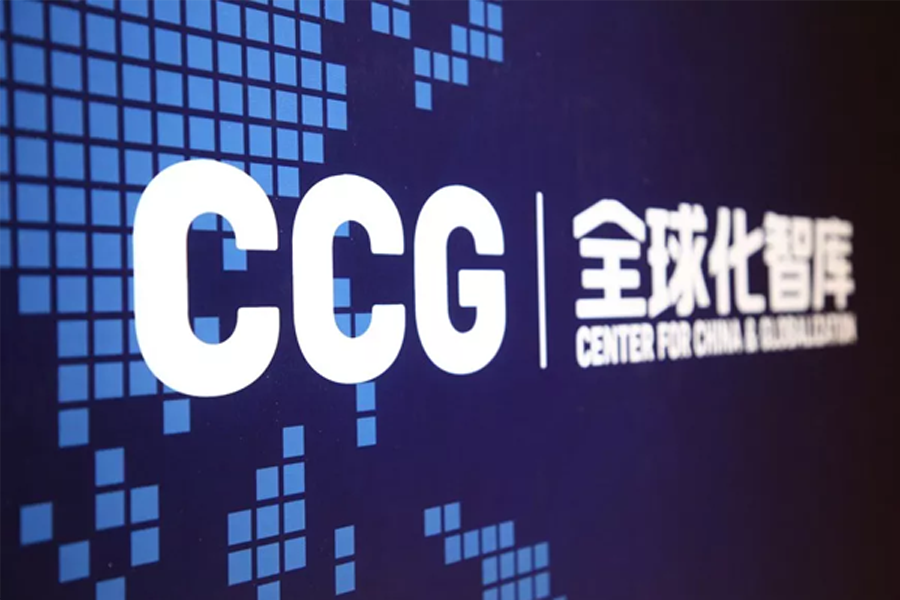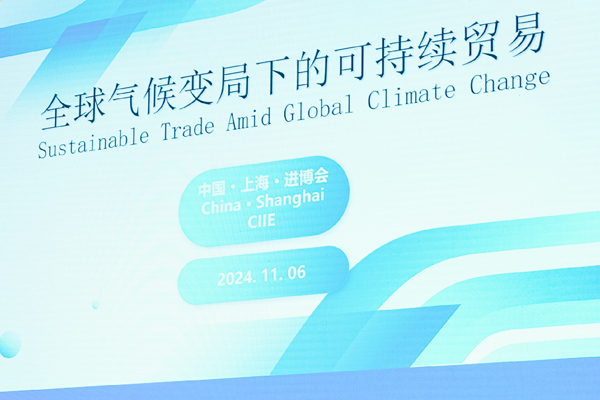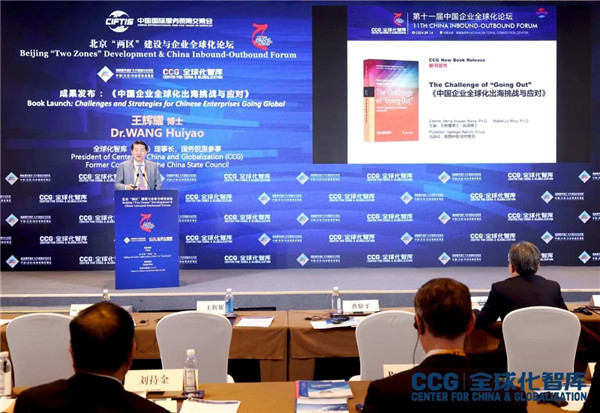【China Daily】SMEs investing overseas must find niche, experts say
December 12 , 2017

With private enterprises’ proportion of Chinese overseas investment on the rise, the key to small and medium-sized enterprises surviving and thriving abroad is to find their own development space, which might be a very tiny but differentiated market, experts say.
“Enterprises need to find their own comparative advantages,” Gao Zhendong, CEO of Positec Group, a private company that develops and produces mechanical products, tells China Daily on the sidelines of the fourth China Outbound Forum in Sanya, Hainan province.
Mou Gang, chairman of Lifan Industry Group, a leading Chinese automaker, says that when they have gained a foothold, “SMEs can invest all they have to make this (market entry) crack become a whole large market.
Representatives of small and medium-sized private enterprises attend the fourth China Outbound Forum in Sanya, Hainan province. Provided to China Daily
“Once they get into the market and earn experience and money, they are starting a virtuous circle,” adds Mou, who also attended the forum, held on Nov 17 and 18.
However, SMEs should have a proper strategy and access to resources, Gao says.
“We have a large number of SMEs, but it must be clear that only those that have clear strategic plans and considerable abilities in financing, resources, technologies and management should think of going out. When a business is having difficulty surviving in the domestic market, it will be very difficult to go abroad.”
According to a report released recently by the Center for China and Globalization, a Beijing-based think tank that co-organized the Sanya forum, investment cases led by private enterprises rose to 395 in 2016, although the total amount of overseas investment by private enterprises declined slightly from 2015.
Small and medium-sized private enterprises are especially willing to seek opportunities in countries participating in the China-led Belt and Road Initiative, the report said.
Private enterprises also stood out in overseas mergers and acquisitions. According to a recent PwC report, the number of concluded transactions reached 359 in the first three quarters of this year – almost five times the number of those led by State-owned enterprises.
Although private enterprises and SOEs have different areas of focus when investing overseas – SOEs tackle large infrastructure projects, while private enterprises generally take on smaller projects – “they can cooperate at the same time,” says Mou.
Huo Jianguo, executive vice-chairman of the China Society for World Trade Organization Studies, says private enterprises are more cautious regarding spending versus earning before they invest in overseas projects. Thus, they can to some extent take on some of the risks that State-owned enterprises now bear, Huo adds.
State-owned enterprises, on the other hand, have vast resources and policy support and therefore play a leading role in achieving infrastructure connectivity, one of the five goals of the Belt and Road Initiative, says Huo on the sidelines of the forum.
Gao, the Positec CEO, says: “I don’t like to overemphasize the different roles of the two kinds of companies. (But) projects that require a large amount of funds and resources, such as infrastructure construction, need SOEs to play a leading role.”
Huo says SMEs have their own specialties in dealing with overseas investment, and private enterprises are more suitable for in-depth cooperation.
“The involvement of private companies will make the future development of the (Belt and Road Initiative) more sustainable, since they will undertake those trading and investment projects that they can achieve by themselves” without government financial assistance, he says.
For example, Huo says, although SMEs might not have been able to compete with SOEs on the construction of the Addis Ababa-Djibouti Railway in Africa, since they did not have sufficient funds and resources, the smaller enterprises nonetheless had advantages for complementary projects that accompanied the construction, such as providing catering services and accommodations for the project workers.
Mou says private enterprises also have the advantage of a decisionmaking structure that is generally more efficient, flexible and adventurous than that of SOEs.
Nonetheless, access to financing can pose a huge hurdle for small to medium-sized enterprises looking overseas, the experts agreed.
Countries participating in the Belt and Road Initiative are mostly in the initial stages of industrialization, so their financial markets are relatively unstable, says Huo.
Additionally, resources from the governments are limited; it is difficult for commercial funds to give sufficient support to risky investment projects; and multilateral development banks, such as the Asian Development Bank, mostly provide services for large SOEs, Huo adds.
And because commercial banks have few overseas branches, it is difficult to find real-time banking services, including overseas currency clearing and exchange, resulting in financing channels that are costly but not smooth, Huo says.
SMEs do indeed have a hard time acquiring financing or loan approval from banks, according to a survey conducted by the China Association of Small and Medium Commercial Enterprises. The survey found that more than 95 percent of SMEs face serious funding shortages, and 65 percent find it difficult to get financing because of credit problems.
Fortunately, Huo says, the number of investment funds specifically for SMEs that invest overseas is increasing, and although the amount of money is not yet large, it’s a useful alternative.
Another solution, Huo says, is that SMEs can join forces on the development of industrial parks. “They don’t need to invest individually. Instead, they can band together.”
For example, in 2006, a cluster-type investment platform for enterprises, Cambodia’s Sihanoukville Special Economic Zone, began to work as a bridge between enterprises in China and Cambodia, a key country on the route of the 21st Century Maritime Silk Road – one component of the Belt and Road Initiative. The park, built by four private Chinese enterprises, has become the leading international industrial park over the past decade.
By the end of 2016, Chinese enterprises had established 77 industrial parks in 36 countries, with 56 located in countries along the Belt and Road routes, according to the report by the Center for China and Globalization.
“Only when the number of projects that SMEs are involved in increases will we find the demand for financing cooperation going up,” Huo says. “Once the financing part steps in, it will attract more trade, more big projects and more communication and cultural exchanges.”
Besides the technology and management experiences that SMEs bring to overseas markets, their decision-makers must consider establishing roots in these countries, experts say.
Huo says that as Chinese enterprises invest in Belt and Road projects, they must provide Chinese who work on the projects with room and board, and possibly an environment imbued with Chinese culture.
However, he says, for the projects themselves, “enterprises must pay attention to downplaying the Chinese elements. It should be a natural process of Chinese elements expanding their influence, instead of thousands of Chinese-style buildings. It is actually a win-win solution for the buildings to accommodate the local style as well as for people to operate the business in local ways, to solve local employment problems and pay local taxes.”
Mou suggests that enterprises get to know the local cultural and environment well, and says they should localize their products, systems and corporate culture. It isn’t possible to completely bring Chinese management theories and patterns into the projects, Mou adds.
Gao says the key is for such enterprises to play to their own strengths. “The enterprises still have to find their own comparative advantages, instead of simply going overseas because they are encouraged to.
“Previously, when there were no funds and resources available, the enterprises still survived and grew. Now the current situation is much better than before, so I believe those SMEs have the ability to find their own development path in foreign lands,” Gao says.






